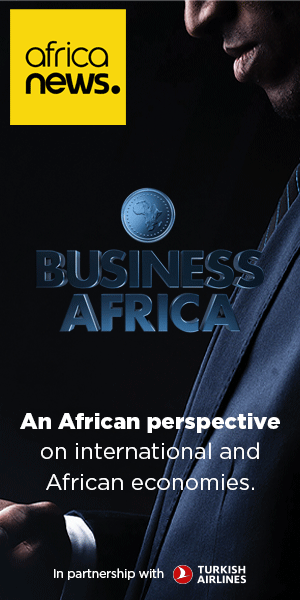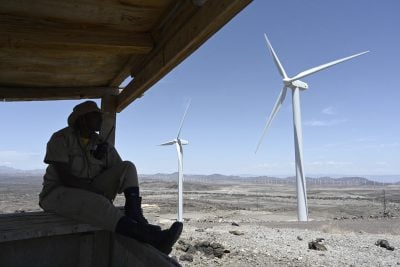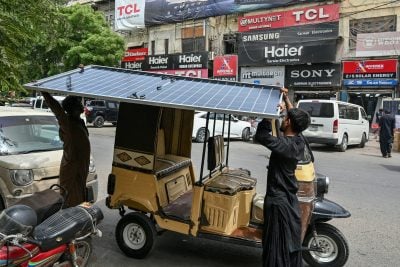Since the turn of the century, the beleaguered South African Airways (SAA) has embarked on no fewer than eight failed turnaround strategies. Having now completed an emergency “90-day action plan” to restore near-term solvency, it is resuming the ninth such attempt.
The heavily loss-making airline has in many ways come to embody everything wrong with state-owned flag-carriers: lumbering, commercially profligate companies whose cost structures hark back to a bygone era of luxury flying.
While its European and North American competitors were long ago jolted by a wave of deregulation and privatisation, SAA continues to live in its government’s pocket, hiding behind a wall of protectionism that props up the parastatal while holding down the private sector.
That last year’s operating loss of R374m ($30m) was hailed as an improvement shows how low the bar has been set for SAA. Its government shareholder freely admits that the flag carrier is “technically insolvent”, and its 90-day plan was only launched in December 2014 after Finance Minister Nhlanhla Nene vowed to stop recapitalising SAA without urgent, deep-rooted reform.
The immediate threat of insolvency passed quickly enough, with the government approving a R6.5bn ($520m) guarantee in January. But Nico Bezuidenhout, SAA’s acting chief executive, has no illusions about the long-term need for restructuring. He believes that – as was the case years ago in Europe and North America – Africa’s emerging low-cost carriers pose an existential threat to legacy airlines such as SAA.
“Obviously we are conscious of the fact that there are a lot of new entrants in the local market,” he says. “There’s growing demand for low-cost air travel in South Africa – no different than anywhere else in the world – and while SAA does very well on the Jo’burg-Cape Town route, it does less well on some other domestic routes. There will need to be some scaling back.”
The new competitors Bezuidenhout is referring to are FlySafair, which launched in October 2014, at the height of SAA’s liquidity crisis, and Skywise, which began scheduled operations in March 2015, the same month that the 90-day plan ended. Both operators style themselves as low-cost carriers that can undercut SAA’s domestic airfares by simplifying the travel process and streamlining costs. Competition is also rising on international routes, with Johannesburg now served by fastjet from Tanzania, and by flyafrica.com from Zimbabwe.
A similar tussle was previously fought out in Europe. In 1995, a plucky entrepreneur of Greek Cypriot origin called Stelios Haji-Ioannou founded easyJet, a low-cost airline that went head to head with Europe’s dominant flag-carriers by offering a no-frills alternative to their full-service products.
Today, easyJet deploys 208 aircraft across the continent. Ryanair, an even more budget-minded carrier, deploys 317 aircraft. Its outspoken boss, Michael O’Leary, once opined that his penny-pinching customers will “crawl bollock-naked over broken glass to get low fares”.
He was not wrong: low-cost carriers now account for 38% of air traffic in Europe. Many of their older, legacy rivals have endured bitter industrial disputes while pushing through cost-cutting measures to boost competitiveness. Others were too slow to adapt and went bust.
Jet lagged
The choice for SAA therefore could not be starker: reform or die. While low-cost carriers will face more obstacles in Africa – the continent lacks many facilitators of the business model, such as cheap secondary airports and liberalised bilateral agreements – their eventual growth seems all but assured.
Fortunately for SAA, few people understand the nature of this competitive threat better than Bezuidenhout. In 2006, he was tasked with setting up Mango, the flag-carrier’s own low-cost subsidiary. Its subsequent success proved that even lumbering flag-carriers can defend market share at the price-sensitive end of the spectrum, albeit if only by launching a distinct brand and product.
And with the government tightening the screws on wastefulness at SAA’s mainline unit, Bezuidenhout sees Mango as a prime vehicle for improving financial performance across the group.
“If the short-haul market becomes predominantly price-driven, then it would make sense that Mango would have a bigger role to play,” he says. “Mango leads the domestic market in terms of cost structure.”
The subsidiary’s cost advantage over its parent stems from higher aircraft utilisation, stripped down on-board services and tougher labour contracts. By deploying Mango to fend off new domestic competitors, SAA can, in turn, focus on the one segment of its business that remains profitable: regional connectivity.
“The fact of the matter is SAA’s returns are substantially higher from African [routes] than from domestic operations,” Bezuidenhout notes. “So why would you keep your assets dedicated to domestic operations when you can derive a much higher return in African operations?”
Regional services will eventually be exposed to the same competitive pressures as domestic ones when the Yamoussoukro Declaration [see page 38] is implemented. But having spent nearly three decades gathering dust, that open-skies agreement now seems toothless. Few African governments see the benefit of implementing a process that would make life harder for their flag-carriers, preferring instead that traffic restrictions slow the advance of more-efficient private-sector rivals.
Bezuidenhout’s immediate priority therefore centres on the domestic network. Mango will grow its nine-strong fleet by “at least two, probably three” aircraft this year, with secondary routes such as Cape Town to Durban and Johannesburg to Port Elizabeth increasingly transitioning from the full-service to the low-cost brand. As for the crucial Johannesburg to Cape Town trunk route – by far South Africa’s main arterial link – the strategy is more reserved. FlySafair and Skywise both launched their businesses in that market, so oversupply of low-cost seats is becoming a concern.
“I’m not interested in having that little tiff. They can have fun there,” Bezuidenhout says, adding that SAA will maintain its presence while Mango will, at most, add one new frequency to the trunk route. “We will do further network expansion and additional capacity on other [domestic] routes.”
Unsurprisingly, Tabassum Qadir and Javed Malik, the co-chairs of Skywise, have a rather different viewpoint. Qadir estimates that Johannesburg to Cape Town is under-served by some 500,000 seats per year, and believes low-cost competition holds the key to catalysing demand.
Mirroring fastjet’s successful strategy in Tanzania – the two-year-old airline recorded its first monthly profit in December – Skywise has pinned its hopes on first-time flyers.
“A lot of people in South Africa have never flown. They believe those machines are expensive, and that flying is exclusive,” says Malik. “They assume driving must be cheaper than flying. So we want to give those people awareness. We want them to know they can fly.”
Dealing with turbulence
It is impossible to overstate the value of low-cost travel to Africa’s emerging economies. The Air Transport Action Group estimates that air transport supported 6.9m jobs and helped contribute $80.5bn to the continent’s GDP in 2012, fostering new trade links and expanding the marketplace for individual companies.
As more latent demand is unlocked, more economic benefit is created. But a business model designed for fully liberalised, economically mature markets in Europe may require some refinement before taking off in Africa. Thus while FlySafair and fastjet have stripped all ancillary services out of their core ticket prices, Skywise is allowing passengers to bring two items of checked luggage for free. “The others are trying to copy the European model,” Qadir says. “But this is Africa, not Europe.”
Time will tell if their strategy pays off, and if Africans value all-in pricing transparency above Ryanair-style frugality.
Either way, Mango, which also offers complimentary checked luggage, can only be one piece of the puzzle in SAA’s latest stab at restructuring. The 81-year-old flag-carrier had also been bleeding money on two long-haul routes – Beijing and Mumbai – and the decision to ground those flights and replace them with codeshare agreements, whereby two or more airlines co-manage the same flight, secured annual savings of nearly R600m ($50m). At least another R200m ($16m) was saved by re-negotiating supplier contracts and amending aircraft leases.
Any further savings under the long-term turnaround strategy will require deeper, more uncomfortable cuts. SAA, like most legacy airlines, has hired too many employees on arguably too-generous salaries. It also has a history of elevating the wrong people to the top job: Bezuidenhout has twice found himself holding the fort while permanent chief executives are investigated for malpractice.
If SAA can overhaul its governance structures, restructure its costs, and instil a private-sector mindset, then it should have a rosy future in Africa’s expanding aviation market. If not, there is no shortage of low-cost carriers waiting to swoop on its carcass.
Martin Rivers
Want to continue reading? Subscribe today.
You've read all your free articles for this month! Subscribe now to enjoy full access to our content.
Digital Monthly
£8.00 / month
Receive full unlimited access to our articles, opinions, podcasts and more.
Digital Yearly
£70.00 / year
Our best value offer - save £26 and gain access to all of our digital content for an entire year!
 Sign in with Google
Sign in with Google 



